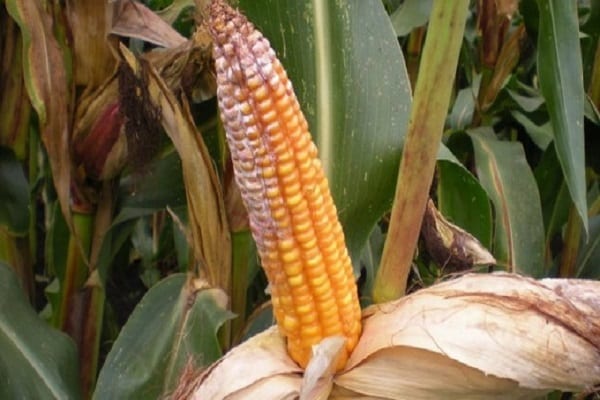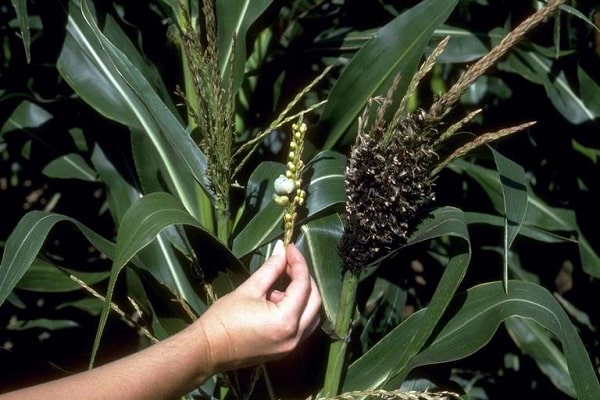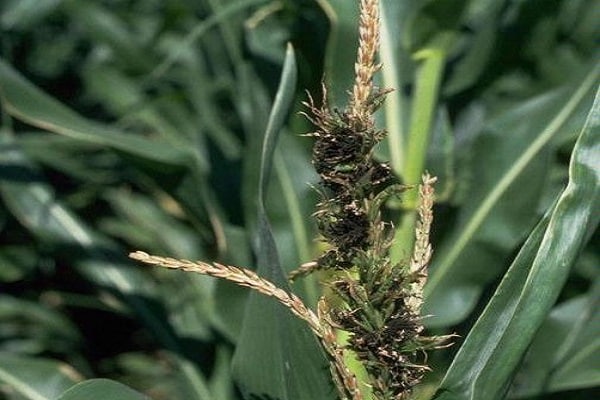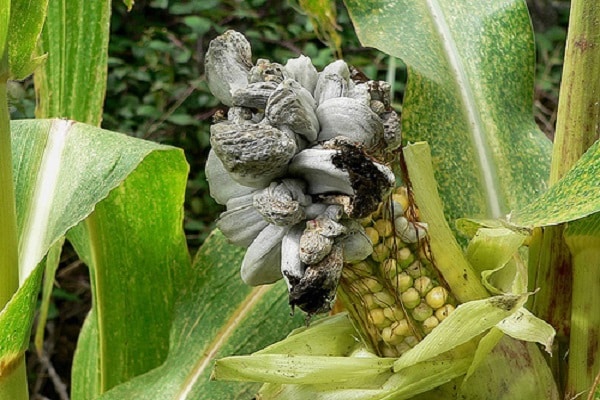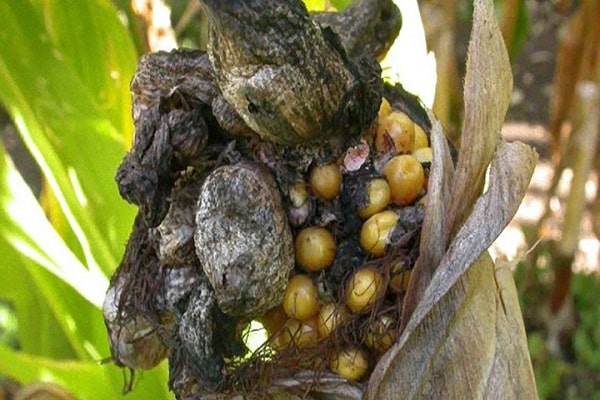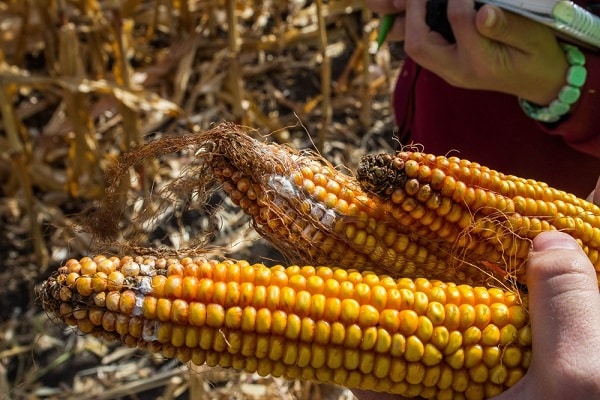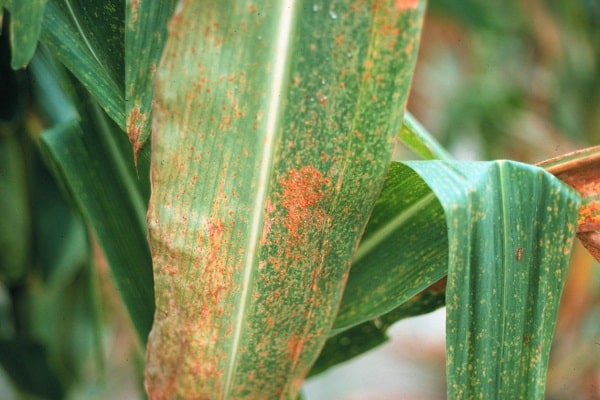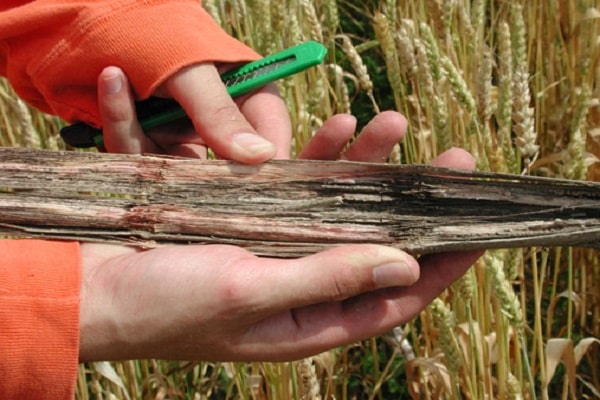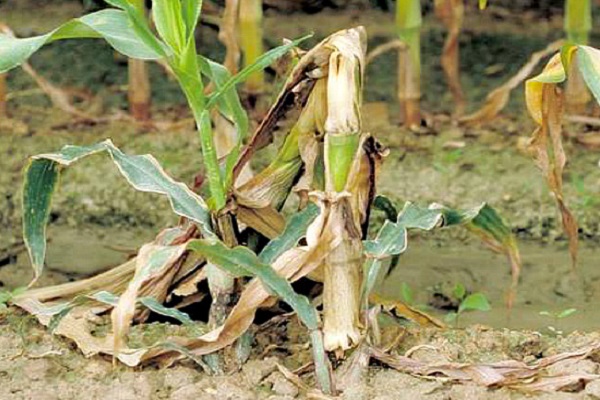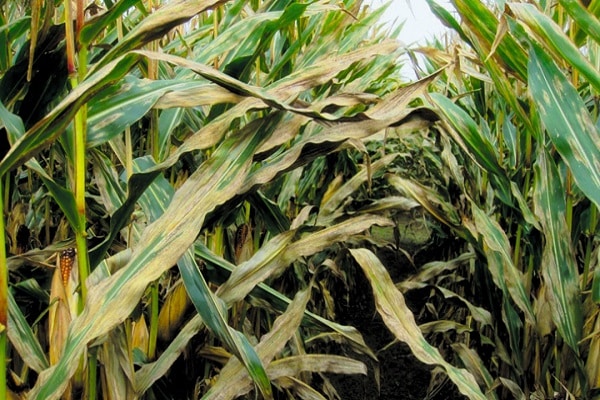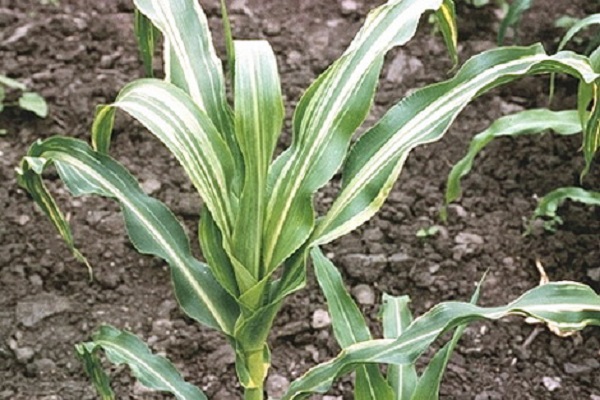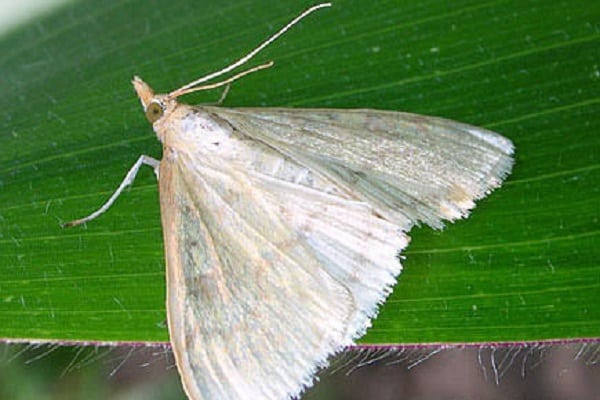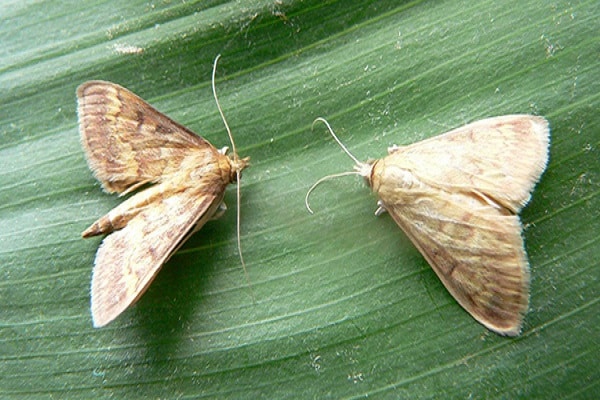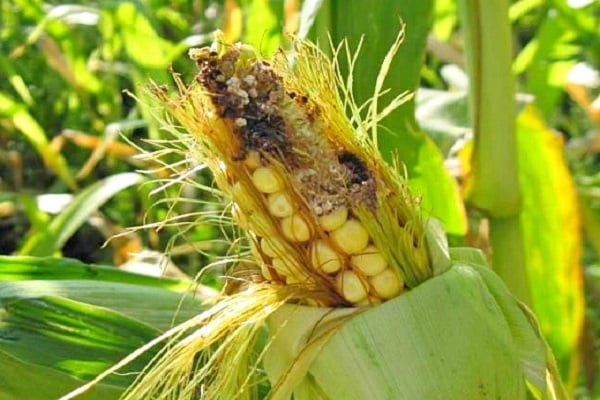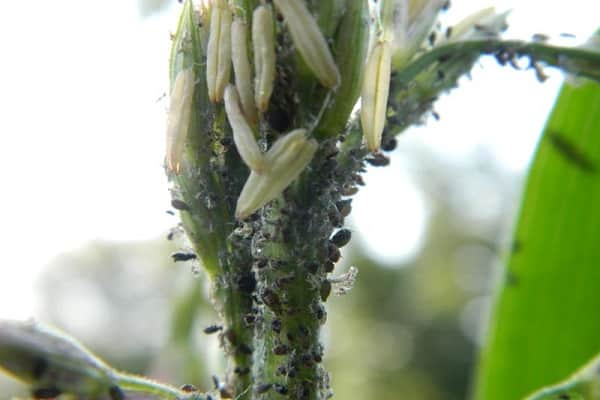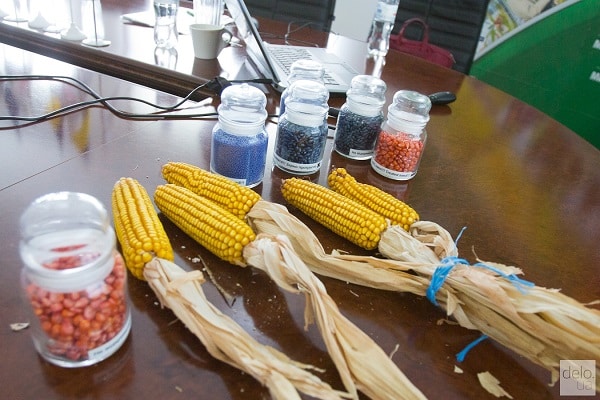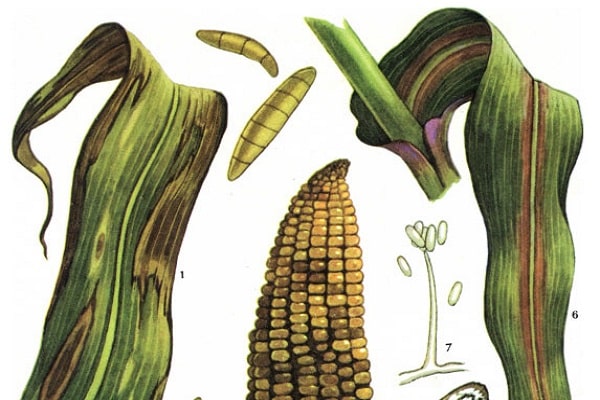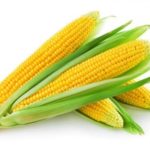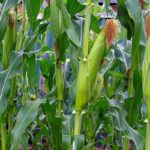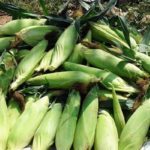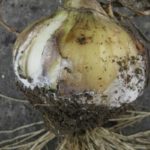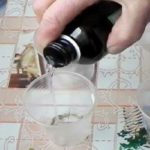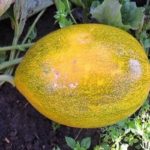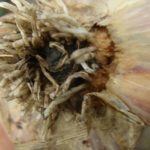Corn diseases can be caused by viruses, bacteria and very often fungi. The quality and quantity of the harvest sharply decreases. If measures to combat them are not taken in time, diseases can lead to complete loss of the crop. By knowing the first signs of a problem, you can stop the further spread of the infection.
Corn diseases, photos, their signs, control measures
Corn is a cereal crop. If corn crops will be susceptible to diseases and pests, it will not be possible to get a good harvest. To prevent the occurrence of infection, as well as its spread, you need to be able to recognize the first signs of a problem and take timely measures.
Infection with diseases occurs due to poor-quality planting material, improper crop care, and untimely pest control. Therefore, it is so important to establish a watering schedule, apply fertilizers on time in order to form good immunity and follow other agricultural practices.
Dusty smut
The fungal disease loose smut affects the panicle and ear of corn. This is a common disease in humid areas of the southern regions (Kuban, Transcaucasia). Sick plants look weak, grow poorly, bush heavily, and the ears form weakly. Gradually, the affected ears turn black, become covered with spores and turn into a dusty mass.
The cause of the disease is contaminated soil, poorly treated seeds, and high air temperatures. The main measure to combat loose smut and blister mold is the treatment of seed material before sowing and compliance with annual crop rotation. Should choose varieties and hybrids of corn resistant to these fungal diseases.
If diseased plants are found in the garden bed, they must be destroyed (it is better to burn them or bury them to a depth of about 50 cm). Every three years it is recommended to plant corn on a new plot of land.
Blister smut
The causative agent of corn smut is a fungus that affects the entire above-ground part of the plant. Small pink or greenish swellings appear in the affected areas. Over time, the swelling grows and becomes black in color.Soon the bubble shell ruptures, and the spores, with the help of wind and insects, fall on other, healthy plants.
The source of infection is infected plants, untreated, contaminated seeds. Bladder smut is especially harmful when it appears on the internodes of the stem and cob. In this case, the grain yield is reduced to 50%. The disease is provoked by drought and late sowing of plant grains.
The main preventive measures are the selection of varieties and hybrids of corn that are resistant to smut, treatment of planting material, removal of plant residues from the site after harvest, and compliance with crop rotation. Seeds are collected only from healthy plants.
Effective drugs for blister smut, as well as for root and stem rot, are: Treater Alpha, Delit Pro, Vincet, Lanta, Pioneer, Maxim XL.
Fusarium
Fusarium corn blight can appear at any stage of plant development. The causative agents of the disease are fungal spores found in swellings. The disease leads to rotting of seeds, roots and stems, as well as ears. Accordingly, the symptoms will differ.
Rotting of seeds and seedlings occurs as a result of sowing infected planting material. Most seeds rot in the soil without forming the first shoots. A light or pinkish coating forms on their surface. Young plants grown from infected seeds on the surface of the ground look weak, are sharply retarded in growth and form cobs poorly.
During the milky-waxy ripeness phase, stem and root rot often appears. The leaves of the plant wither, turn yellow, and dry out. The roots turn black, dry out, and the affected corn is easy to pull out of the ground. Gradually the cobs themselves dry out and wither.
Ear rot can occur even during storage of the harvested crop. First, a white-pink coating appears on the grains, and gradually the entire cob is affected. The color of the plaque darkens and becomes brownish-gray.
The source of infection is contaminated seeds or uncollected plant debris on the land. The disease can be provoked by wet, cold weather, high air temperatures during the period of ripening of cobs, damage to cobs and grains by pests.
Before planting, be sure to treat the seeds, select fusarium-resistant varieties and hybrids of corn, and promptly detect and remove diseased plants. Autumn plowing of the land and removal of plant residues, timely control of insect pests are shown.
Stem rot
The fungal disease stem rot appears at the end of the growing season at the stage of milk maturity of corn. The description of this maize disease is as follows: the leaves become gray-green in color and become covered with a matte coating, dry out, and wither. A pinkish coating can be observed on the stem; over time, it softens and breaks.
The source of infection is the persistence of spores in plant debris after harvest. The fungus actively reproduces in hot, dry weather. The provoking factor is improper watering and too thick sowing of corn.
To increase the resistance of plants to rot, you need to observe the optimal sowing time, planting density and seeding depth; after harvesting, you need to dig up the area and remove all plant debris; you must treat the planting material with fungicides.
Southern helminthosporiosis
Most often, the leaves of the plant suffer from southern helminthosporiosis of corn, less often the roots and the cob.The first signs of the disease are the appearance of brown oblong spots on the leaves. Gradually the affected area dries out. The spots grow and occupy the entire leaf area.
Corn spot or helminthosporiosis appears in mid-summer. The provoking factor is high humidity and low air temperature. The source of infection spread is untreated seeds and plant residues.
Before planting, the seeds must be sorted and treated. If infected seeds are planted, the seedlings produced are weak and often unable to reach the soil surface. To increase immunity, fertilizers are applied to the soil several times a season. It is not advisable to plant corn for three years in a row in the same area.
Corn pests, their signs and control measures
Insect pests are considered one of the reasons for the spread of diseases among grain crops. To combat them, you can use both folk remedies and ready-made drugs.
Stem borer
Corn pests eat the above- and underground parts of the plant, causing it to weaken and become susceptible to disease. In addition, the pests themselves can transfer pathogenic bacteria from a diseased plant to a healthy plant.
It is not the adults that cause the greatest harm to the plant, but the moth caterpillars. Gray-yellow caterpillars (25 mm in length) are especially active in July-August, when the weather is dry and warm. Corn stem borer caterpillars live on the surface of plants, burrowing into the petioles of stems, leaves and panicle flowers.
Plant nutrition is disrupted, and sometimes stems can break.The plant begins to bloom later, the size of the leaves decreases, and pollination deteriorates.
To prevent the spread of the meadow borer on corn, it is necessary to fight weeds, mow them around the plantings, and not leave the tops after harvesting.
Root aphid
Root aphids most often attack corn in hot, dry weather. The plant slows down in growth, the leaves turn yellow and dry out, and is easily affected by fungal diseases. If the area where the infection spreads is small, then you can pick off the diseased plants.
Insecticides and fungicides (Confidor, Actellik, Fitoverm, Fas) are used to protect plants from pests. Since insects can overwinter on the remains of stems, after harvesting the area must be cleared of all vegetation. It is best to choose early ripening varieties of corn.
Swedish fly
The Swedish fly most often infects corn during seedling germination. The larvae damage young seedlings, and they begin to lag behind in growth and development. The leaves of the affected corn become dark green and the stem thickens. Corn pests reduce not only the quantity of the crop, but also its quality.
During the period of mass flies and egg laying, it is recommended to treat the plants with preparations such as Karate, Decis, Cyperon. As a preventive measure, it is useful to fertilize with nitrogen fertilizers, observe optimal sowing dates and select resistant varieties of corn.
Preventive measures
Prevention should begin from the moment the seeds are selected and end with clearing the field of plant residues. Preventive measures:
- It is better to choose early ripening varieties of corn.
- It is advisable to treat the seeds.
- When planting, it is recommended to add potassium-phosphorus fertilizers to the soil.
- It is important to know the first signs of the appearance of diseases and pests.
- Remove damaged plants from the site in a timely manner.
- Dig the field deeply in the fall.
Another common disease in corn is bacterial wilt, or wilt. The bacterium affects all organs of the plant. Light green and yellow stripes appear on the leaves.
The main measure to combat the disease is to avoid sowing infected seeds. In addition, the grains must be treated before planting, pests must be removed in a timely manner, and weeds must be controlled.

